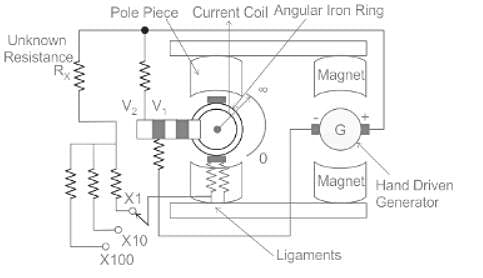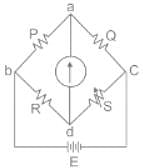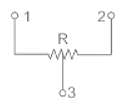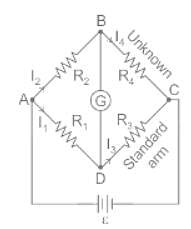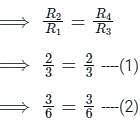Test: Measurement of Resistance - 2 - Electrical Engineering (EE) MCQ
10 Questions MCQ Test - Test: Measurement of Resistance - 2
Which instrument is used for conducting tests after wire installation?
| 1 Crore+ students have signed up on EduRev. Have you? Download the App |
Which among the following is a method of absolute measurement of resistance?
When a capacitor was connected across the terminals of an ohm meter, the pointer indicated a low resistance initially and then slowly came back to very high resistance. This indicates that capacitor is
In measuring resistance by voltmeter-ammeter method, the voltmeter can be connected either across supply or across the resistance. If the resistance is low, the voltmeter should be connected
Find the unknown resistance value in a given circuit, given the bridge is balanced.

In case of the Wheatstone bridge shown in the below circuit diagram P = 3 kΩ and Q = 5 kΩ. The null value for the galvanometer is obtained when S = 6 kΩ. Find the value of R and the resistance measurement range of the bridge if ‘S’ value varies from 1 kΩ to 8 kΩ
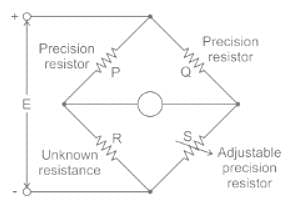
Which of the following statement is NOT correct?
Find the value of source current (I) from the circuit as shown below



